Yanjun Huang
Driving in Corner Case: A Real-World Adversarial Closed-Loop Evaluation Platform for End-to-End Autonomous Driving
Dec 18, 2025Abstract:Safety-critical corner cases, difficult to collect in the real world, are crucial for evaluating end-to-end autonomous driving. Adversarial interaction is an effective method to generate such safety-critical corner cases. While existing adversarial evaluation methods are built for models operating in simplified simulation environments, adversarial evaluation for real-world end-to-end autonomous driving has been little explored. To address this challenge, we propose a closed-loop evaluation platform for end-to-end autonomous driving, which can generate adversarial interactions in real-world scenes. In our platform, the real-world image generator cooperates with an adversarial traffic policy to evaluate various end-to-end models trained on real-world data. The generator, based on flow matching, efficiently and stably generates real-world images according to the traffic environment information. The efficient adversarial surrounding vehicle policy is designed to model challenging interactions and create corner cases that current autonomous driving systems struggle to handle. Experimental results demonstrate that the platform can generate realistic driving images efficiently. Through evaluating the end-to-end models such as UniAD and VAD, we demonstrate that based on the adversarial policy, our platform evaluates the performance degradation of the tested model in corner cases. This result indicates that this platform can effectively detect the model's potential issues, which will facilitate the safety and robustness of end-to-end autonomous driving.
Chain-of-Thought for Autonomous Driving: A Comprehensive Survey and Future Prospects
May 26, 2025Abstract:The rapid evolution of large language models in natural language processing has substantially elevated their semantic understanding and logical reasoning capabilities. Such proficiencies have been leveraged in autonomous driving systems, contributing to significant improvements in system performance. Models such as OpenAI o1 and DeepSeek-R1, leverage Chain-of-Thought (CoT) reasoning, an advanced cognitive method that simulates human thinking processes, demonstrating remarkable reasoning capabilities in complex tasks. By structuring complex driving scenarios within a systematic reasoning framework, this approach has emerged as a prominent research focus in autonomous driving, substantially improving the system's ability to handle challenging cases. This paper investigates how CoT methods improve the reasoning abilities of autonomous driving models. Based on a comprehensive literature review, we present a systematic analysis of the motivations, methodologies, challenges, and future research directions of CoT in autonomous driving. Furthermore, we propose the insight of combining CoT with self-learning to facilitate self-evolution in driving systems. To ensure the relevance and timeliness of this study, we have compiled a dynamic repository of literature and open-source projects, diligently updated to incorporate forefront developments. The repository is publicly available at https://github.com/cuiyx1720/Awesome-CoT4AD.
ARTEMIS: Autoregressive End-to-End Trajectory Planning with Mixture of Experts for Autonomous Driving
Apr 28, 2025Abstract:This paper presents ARTEMIS, an end-to-end autonomous driving framework that combines autoregressive trajectory planning with Mixture-of-Experts (MoE). Traditional modular methods suffer from error propagation, while existing end-to-end models typically employ static one-shot inference paradigms that inadequately capture the dynamic changes of the environment. ARTEMIS takes a different method by generating trajectory waypoints sequentially, preserves critical temporal dependencies while dynamically routing scene-specific queries to specialized expert networks. It effectively relieves trajectory quality degradation issues encountered when guidance information is ambiguous, and overcomes the inherent representational limitations of singular network architectures when processing diverse driving scenarios. Additionally, we use a lightweight batch reallocation strategy that significantly improves the training speed of the Mixture-of-Experts model. Through experiments on the NAVSIM dataset, ARTEMIS exhibits superior competitive performance, achieving 87.0 PDMS and 83.1 EPDMS with ResNet-34 backbone, demonstrates state-of-the-art performance on multiple metrics.
Co-MTP: A Cooperative Trajectory Prediction Framework with Multi-Temporal Fusion for Autonomous Driving
Feb 25, 2025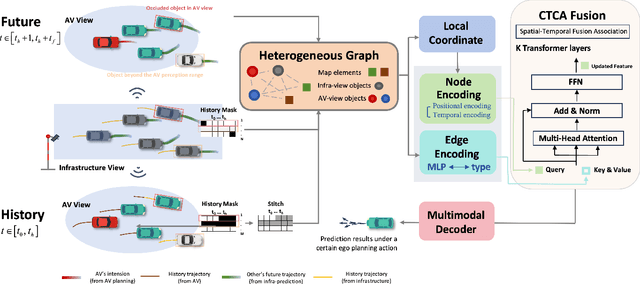
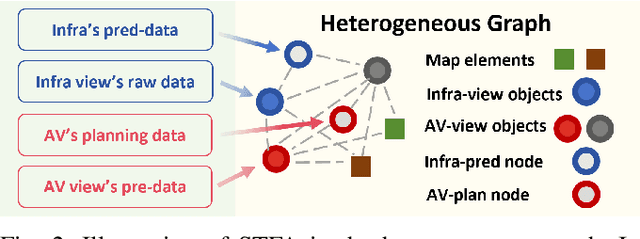
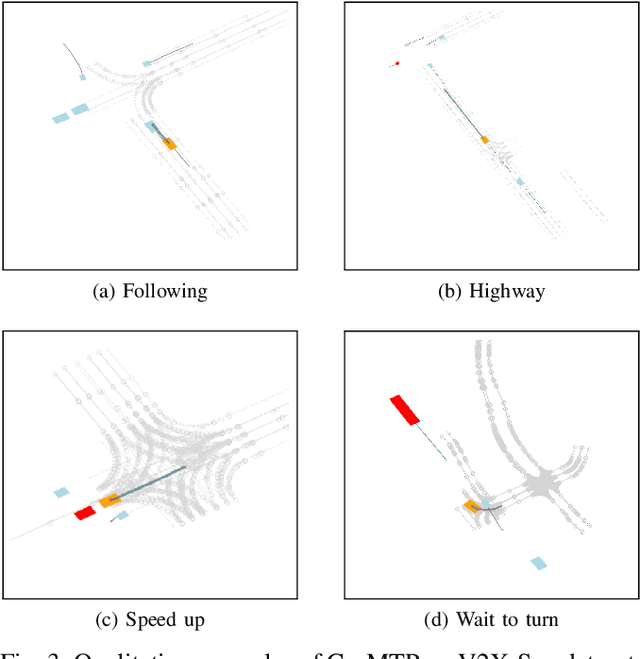

Abstract:Vehicle-to-everything technologies (V2X) have become an ideal paradigm to extend the perception range and see through the occlusion. Exiting efforts focus on single-frame cooperative perception, however, how to capture the temporal cue between frames with V2X to facilitate the prediction task even the planning task is still underexplored. In this paper, we introduce the Co-MTP, a general cooperative trajectory prediction framework with multi-temporal fusion for autonomous driving, which leverages the V2X system to fully capture the interaction among agents in both history and future domains to benefit the planning. In the history domain, V2X can complement the incomplete history trajectory in single-vehicle perception, and we design a heterogeneous graph transformer to learn the fusion of the history feature from multiple agents and capture the history interaction. Moreover, the goal of prediction is to support future planning. Thus, in the future domain, V2X can provide the prediction results of surrounding objects, and we further extend the graph transformer to capture the future interaction among the ego planning and the other vehicles' intentions and obtain the final future scenario state under a certain planning action. We evaluate the Co-MTP framework on the real-world dataset V2X-Seq, and the results show that Co-MTP achieves state-of-the-art performance and that both history and future fusion can greatly benefit prediction.
Sustainable Adaptation for Autonomous Driving with the Mixture of Progressive Experts Networ
Feb 09, 2025



Abstract:Learning-based autonomous driving methods require continuous acquisition of domain knowledge to adapt to diverse driving scenarios. However, due to the inherent challenges of long-tailed data distribution, current approaches still face limitations in complex and dynamic driving environments, particularly when encountering new scenarios and data. This underscores the necessity for enhanced continual learning capabilities to improve system adaptability. To address these challenges, the paper introduces a dynamic progressive optimization framework that facilitates adaptation to variations in dynamic environments, achieved by integrating reinforcement learning and supervised learning for data aggregation. Building on this framework, we propose the Mixture of Progressive Experts (MoPE) network. The proposed method selectively activates multiple expert models based on the distinct characteristics of each task and progressively refines the network architecture to facilitate adaptation to new tasks. Simulation results show that the MoPE model outperforms behavior cloning methods, achieving up to a 7.3% performance improvement in intricate urban road environments.
Quantitative Representation of Scenario Difficulty for Autonomous Driving Based on Adversarial Policy Search
Aug 26, 2024Abstract:Adversarial scenario generation is crucial for autonomous driving testing because it can efficiently simulate various challenge and complex traffic conditions. However, it is difficult to control current existing methods to generate desired scenarios, such as the ones with different conflict levels. Therefore, this paper proposes a data-driven quantitative method to represent scenario difficulty. Compared with rule-based discrete scenario difficulty representation method, the proposed algorithm can achieve continuous difficulty representation. Specifically, the environment agent is introduced, and a reinforcement learning method combined with mechanism knowledge is constructed for policy search to obtain an agent with adversarial behavior. The model parameters of the environment agent at different stages in the training process are extracted to construct a policy group, and then the agents with different adversarial intensity are obtained, which are used to realize data generation in different difficulty scenarios through the simulation environment. Finally, a data-driven scenario difficulty quantitative representation model is constructed, which is used to output the environment agent policy under different difficulties. The result analysis shows that the proposed algorithm can generate reasonable and interpretable scenarios with high discrimination, and can provide quantifiable difficulty representation without any expert logic rule design. The video link is https://www.youtube.com/watch?v=GceGdqAm9Ys.
A Safe Self-evolution Algorithm for Autonomous Driving Based on Data-Driven Risk Quantification Model
Aug 23, 2024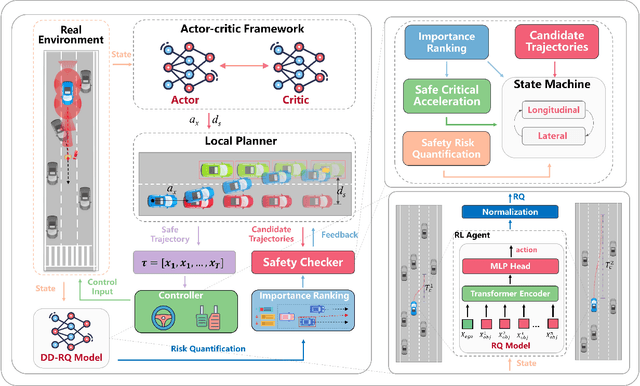
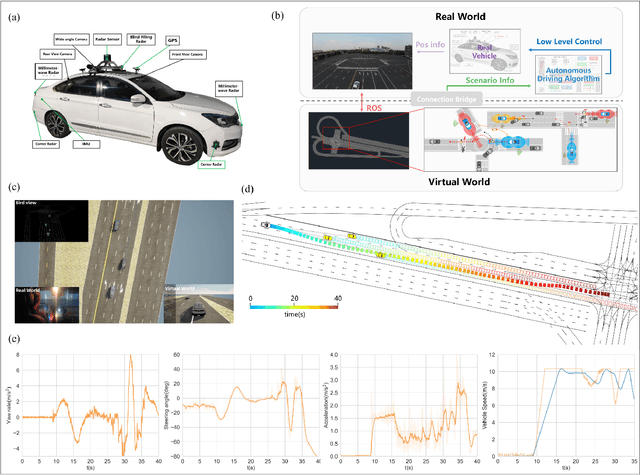
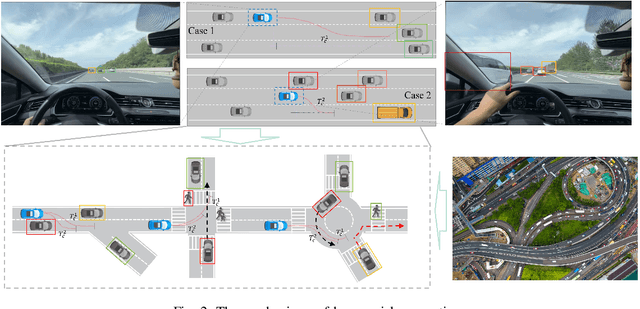
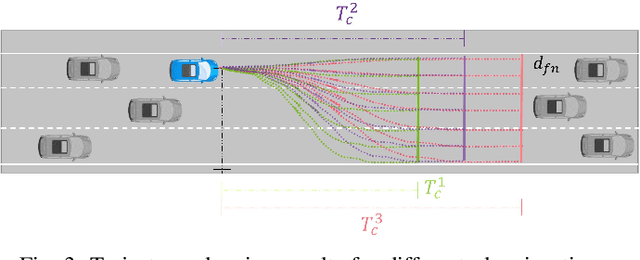
Abstract:Autonomous driving systems with self-evolution capabilities have the potential to independently evolve in complex and open environments, allowing to handle more unknown scenarios. However, as a result of the safety-performance trade-off mechanism of evolutionary algorithms, it is difficult to ensure safe exploration without sacrificing the improvement ability. This problem is especially prominent in dynamic traffic scenarios. Therefore, this paper proposes a safe self-evolution algorithm for autonomous driving based on data-driven risk quantification model. Specifically, a risk quantification model based on the attention mechanism is proposed by modeling the way humans perceive risks during driving, with the idea of achieving safety situation estimation of the surrounding environment through a data-driven approach. To prevent the impact of over-conservative safety guarding policies on the self-evolution capability of the algorithm, a safety-evolutionary decision-control integration algorithm with adjustable safety limits is proposed, and the proposed risk quantization model is integrated into it. Simulation and real-vehicle experiments results illustrate the effectiveness of the proposed method. The results show that the proposed algorithm can generate safe and reasonable actions in a variety of complex scenarios and guarantee safety without losing the evolutionary potential of learning-based autonomous driving systems.
A Safety-Oriented Self-Learning Algorithm for Autonomous Driving: Evolution Starting from a Basic Model
Aug 22, 2024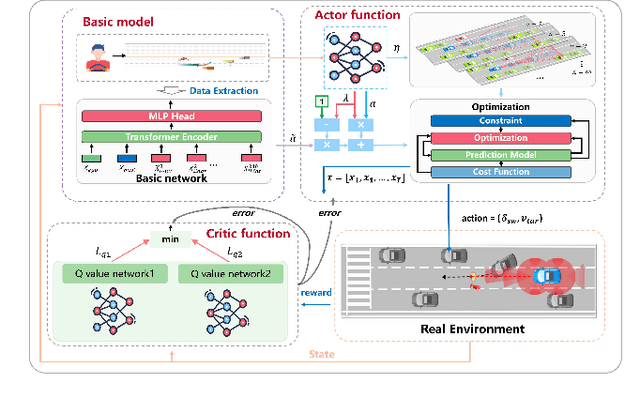
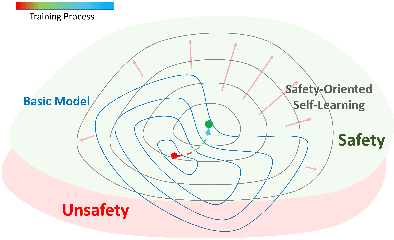
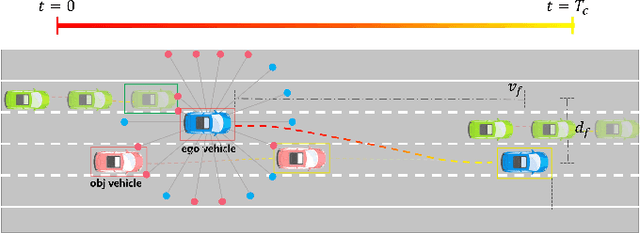
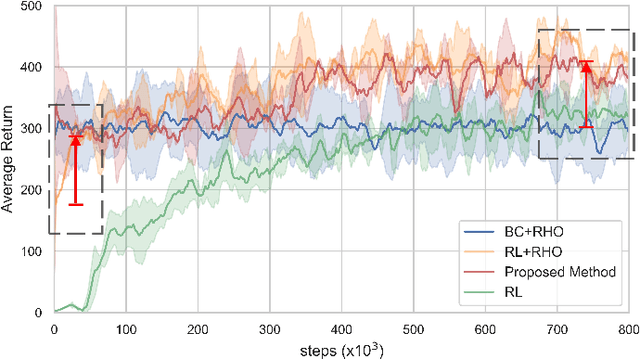
Abstract:Autonomous driving vehicles with self-learning capabilities are expected to evolve in complex environments to improve their ability to cope with different scenarios. However, most self-learning algorithms suffer from low learning efficiency and lacking safety, which limits their applications. This paper proposes a safety-oriented self-learning algorithm for autonomous driving, which focuses on how to achieve evolution from a basic model. Specifically, a basic model based on the transformer encoder is designed to extract and output policy features from a small number of demonstration trajectories. To improve the learning efficiency, a policy mixed approach is developed. The basic model provides initial values to improve exploration efficiency, and the self-learning algorithm enhances the adaptability and generalization of the model, enabling continuous improvement without external intervention. Finally, an actor approximator based on receding horizon optimization is designed considering the constraints of the environmental input to ensure safety. The proposed method is verified in a challenging mixed traffic environment with pedestrians and vehicles. Simulation and real-vehicle test results show that the proposed method can safely and efficiently learn appropriate autonomous driving behaviors. Compared reinforcement learning and behavior cloning methods, it can achieve comprehensive improvement in learning efficiency and performance under the premise of ensuring safety.
A Safe and Efficient Self-evolving Algorithm for Decision-making and Control of Autonomous Driving Systems
Aug 22, 2024Abstract:Autonomous vehicles with a self-evolving ability are expected to cope with unknown scenarios in the real-world environment. Take advantage of trial and error mechanism, reinforcement learning is able to self evolve by learning the optimal policy, and it is particularly well suitable for solving decision-making problems. However, reinforcement learning suffers from safety issues and low learning efficiency, especially in the continuous action space. Therefore, the motivation of this paper is to address the above problem by proposing a hybrid Mechanism-Experience-Learning augmented approach. Specifically, to realize the efficient self-evolution, the driving tendency by analogy with human driving experience is proposed to reduce the search space of the autonomous driving problem, while the constrained optimization problem based on a mechanistic model is designed to ensure safety during the self-evolving process. Experimental results show that the proposed method is capable of generating safe and reasonable actions in various complex scenarios, improving the performance of the autonomous driving system. Compared to conventional reinforcement learning, the safety and efficiency of the proposed algorithm are greatly improved. The training process is collision-free, and the training time is equivalent to less than 10 minutes in the real world.
Joint Sparse Representations and Coupled Dictionary Learning in Multi-Source Heterogeneous Image Pseudo-color Fusion
Oct 15, 2023



Abstract:Considering that Coupled Dictionary Learning (CDL) method can obtain a reasonable linear mathematical relationship between resource images, we propose a novel CDL-based Synthetic Aperture Radar (SAR) and multispectral pseudo-color fusion method. Firstly, the traditional Brovey transform is employed as a pre-processing method on the paired SAR and multispectral images. Then, CDL is used to capture the correlation between the pre-processed image pairs based on the dictionaries generated from the source images via enforced joint sparse coding. Afterward, the joint sparse representation in the pair of dictionaries is utilized to construct an image mask via calculating the reconstruction errors, and therefore generate the final fusion image. The experimental verification results of the SAR images from the Sentinel-1 satellite and the multispectral images from the Landsat-8 satellite show that the proposed method can achieve superior visual effects, and excellent quantitative performance in terms of spectral distortion, correlation coefficient, MSE, NIQE, BRISQUE, and PIQE.
 Add to Chrome
Add to Chrome Add to Firefox
Add to Firefox Add to Edge
Add to Edge